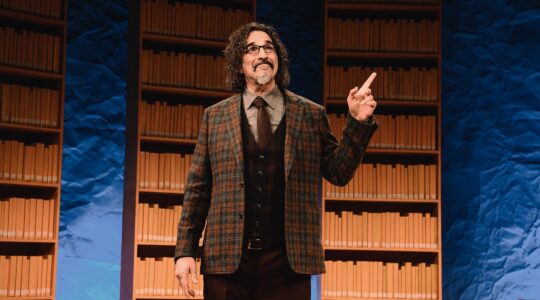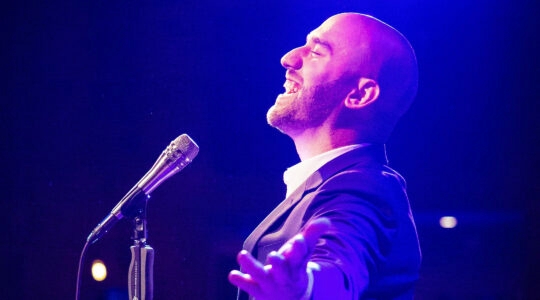Abe Katz, a parent from Queens and a graduate of Bostonís Maimonides school as well as Yeshiva University, writes: ìI am the father of 17-year-old triplets (two boys and a girl)who have always attended a day school so that I feel a little bit like an expertî on Jewish education.
But ìalthough my children have attended day school and have studied Hebrew language since first grade, they can hardly speak or write Hebrew. Each of the schools that they attended believed in teaching Hebrew language by teaching Jewish subjects Ivrit BíIvrit,î the dominant teaching theory in the New York area, literally meaning that Jewish subjects are translated from textual Hebrew into spoken Hebrew, rather than into English. Hebrew, in the ideal of this method, is the singular language of the classroom from the earliest grades on.Fluency is expected to be developed through a complete classroom immersion. However, Katz says, from his personal experience, ìteaching the basic building blocks is neglected. It has been a failure for my children and for their fellow students. When the Jewish studies teachers have seen that the children are not learning their Chumash [Torah] and Navi [Prophets] because they are having trouble following in Hebrew, they revert to teaching in English.îKatz points out that the basics of Hebrew are covered early in the studentís life and not reviewed very often: ìOne year of not learning Hebrew language became a series of years of not learning the Hebrew language.î
By contrast, back in his Boston childhood, writes Katz, ìI was taught by old-time teachersî who explained the Hebrew texts in English. It was very similar to the way I was later taught French. It was only when I was in high school that Maimonides instituted Ivrit BíIvrit. Needless to say, I learned most of my Hebrew language in elementary school…. I believe that if Hebrew was taught like other foreign languages [with] the basics repeated year after year, our students would be more adept at speaking and reading Hebrew.
îAnother thought gnaws at him after 12 years of Jewish school: Although prayer is required in all Jewish schools, the actual study of prayer, he points out, ìis a non-subject in most schools and yet it is what we do at least three times a day every day of the year. None of my children have had any courses on tefilla [prayer].îHe recalls that at Maimonides, students were required to study the ways and means of the siddur, once a week, from junior high through senior year. The class covered not only the daily prayers but also Shabbat prayer, Hallel, the High Holy Day prayers, and the Haggadah.At the Web site for Bar-Ilan Universityís Rabbi Joseph H. Lookstein Center for Jewish Education in the Diaspora, various Jewish educators have been discussing the question of prayer as an educational experience.One contributor to the Lookstein Center, Rabbi Chaim Kosofsky, a teacher in the Lubavitch school system, told The Jewish Week: ìIt is unreasonable to expect students to behave appropriately during the prayers, saying the words and reading from the siddur, if we do not teach them what kavana [proper devotion] is and how to use it.îHe suggests that students not only learn the meaning, origin and background of tefillot, but that students be taught the prayerful art of ìself-introspection.î
Rabbi Kosofsky suggests that this can be done by having students write ìan essay or a poem about things to be thankful for … an activity that can make Mizmor LíToda [Psalm of Praise] meaningful to the students.îAn Israeli educator, Elliot Fischer, logged onto the Lookstein site with the idea from the Israeli graduate yeshiva, Kerem BíYavne. There, once a week, a student was obliged to deliver a teaching he had prepared on a specific prayer. Fischer writes, ìThe advantage of this system is that students would [form an] attachment to those prayers for which they prepared, as well as appreciating similar efforts by their peers.
îA former day school principal, who declined to be identified, tied both of Katzís questions together. He told The Jewish Week: ìIf day schools are doing even an acceptable job of teaching Hebrew and teaching prayer, why is ArtScrollís English translations of the siddur, the Chumash and the Talmud such best-sellers among Orthodox Jews who all went to day schools and learned these Jewish texts in a Hebrew-to-Hebrew environment?î
Rabbi Martin Schloss, director of school services at New Yorkís Board of Jewish Education, said that in the centrist day schools, Hebrew immersion remains ìa very popular method. The concept is to start it as young as possible so the kids are as proficient as possible using Ivrit so it is not an impediment to pure learning.îHebrew-to-Hebrew, says Rabbi Schloss, ìhas loads of advantages. It brings Hebrew to life. You create better language skills. It is Lashon HaKodesh [the holy language]. It allows better access and relationships to Israel, better access to modern texts
The New York Jewish Week brings you the stories behind the headlines, keeping you connected to Jewish life in New York. Help sustain the reporting you trust by donating today.




